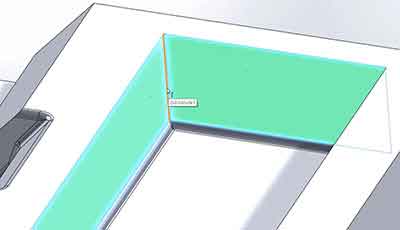Sheet metal is popular due to its strength, durability and manufacturability. When you design for this medium, there are some guidelines that you should follow, especially when it comes to bending it. One is an important feature called the sheet metalbend radius.
What is a Bend Radius?
When you bend sheet metal, the material compresses between a punch and a die. The punch is backed by tons of pressure, and the punch’s business end determines the internal bend radius. The resulting inner bend won’t end up with a squared-off 90-degree angle, as it’s impossible to get a completely sharp bend. No matter what, you’ll always have a curve, which is how it gets the name, the bend radius.
What this means is that no matter how thick your sheet metal, there is a very specific quality to the interior of the bend. In the sheet metal industry, a .030” bend radius is the most common, and it’s less than 10x the thickness of a human hair! That number is the standard for both aesthetic and structural reasons.
How Does Sheet Metal Bend Radius Affect Part Size?
The amount of metal in the bend affects the final dimensions of your part. When bending sheet metal the material stretches, so to ensure accuracy, we add what is called a gain. We always think about that, and we factor that in when creating the flat pattern that becomes your part. From a designer perspective, all we need is your final geometry. We take it from there so you get the part that you were expecting.
This video provides some additional insight into the specifics of bending sheet metal.
Related Videos
Why Sheet Metal Size Matters
Three Things You Need to Know about Forming Sheet Metal
Why Tolerance Matters in Sheet Metal
For more great sheet metal design tips, download our Design for Manufacturing (DFM) Guide.





